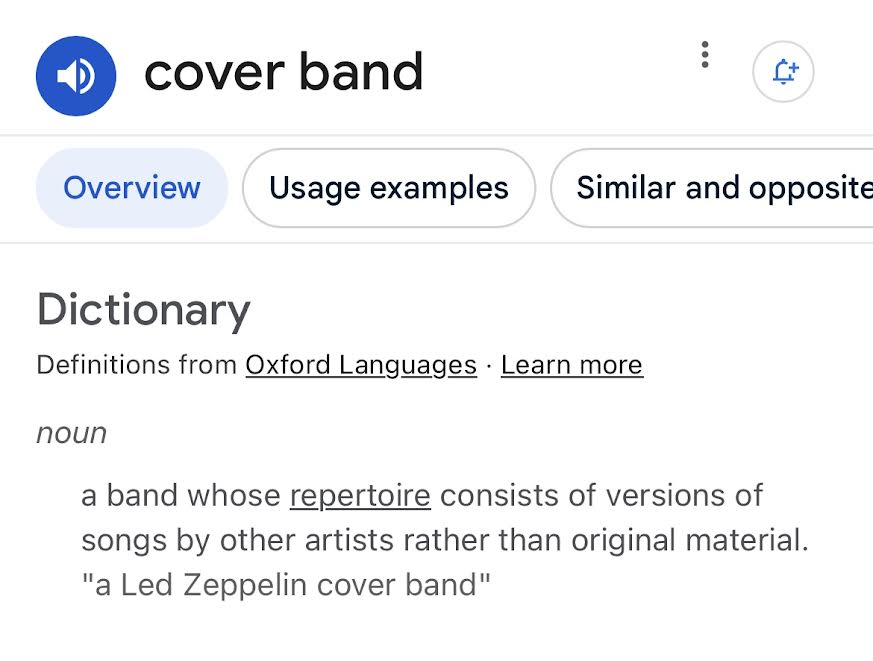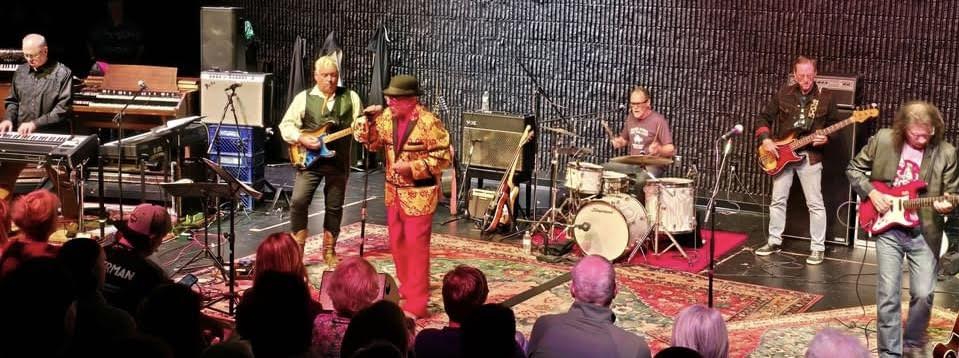
Shenanigan tales from Steven J Athanas
This definition may be a bit dated. I think a Led Zeppelin cover band would now be called a Led Zep tribute band, assuming that’s all they do is Led Zep. Whereas a cover band (or bar band) is a band that covers/interprets multiple bands. Apples and oranges, I suppose.
The fact of the matter, however, is this: 99.99999 percent of musicians, regardless of gender, style of music, amount of talent, etc, have one thing in common: an ego. An egoless musician is an oxymoron, it just don’t happen. It is that ego that leans them into being a musician – to put themselves on a stage, under lights, and putting it all out there, for all to see and judge.
Of course, there are varying degrees of ego. Some have the talent to back it up, while their humility will keep it all in check. Still, others seem to throw it all against the wall and see what sticks. Some, of course, have more ego than talent and vice versa.
But it’s that “ME” aspect of being a musician, present in all, that puts us out there, dares us, prods us.
When a human being starts a rock band, it’s that initial ego that puts us on stage. Then what? We sing and play, and nine times out of 10, we sing other people’s material, because the ego wants acceptance, and we get acceptance by offering our audience the familiar, that which they already know.
The audience knows the words, the melody and they recognize the rhythm, which allows them to get up and dance. It’s nearly impossible in most local nightclubs in Northwest Ohio to come out and grab ‘em with a song that is an original composition. Sad but true. The performer and the audience want to bond, feel that they’re coming from a common place, and have something to share. Truth be told, the band is usually secondary to the crowd that is just looking to have a good time.
One of the things that is always there, but not given much recognition in a bar/live music situation is this: the club owner. He/she wants one thing and one thing only – to make money, and he/she does that by selling drinks.
If people are happy and thirsty because they’ve been dancing, working up a sweat, then everyone’s happy. The owner’s happy because he/she’s making dough, and the bartenders are happy because they’re getting tips. The crowd is happy because they’re familiar with what the band is puttin’ down, and the band is happy because their ego’s being gratified and there’s a good chance they’ll be asked to return to the club.
And yet, that nagging ego usually wants more. Initially, it’s great to make people dance, but after a while many musicians think they can throw in one of their tunes. It’s a risky proposition. When the dance floor’s packed because you’re playing Brown-Eyed Girl, or Everlong, and you throw in an unknown song at the crowd, it breaks the flow. People leave the dance floor, maybe even the club. Then you got trouble, brudda!
Of course, there are bands that defy this premise, that are happy making the money and getting the gratification of playing other peoples’ music exclusively. Nevertheless, many musicians try to push the envelope.
All of my bands were cover bands. From Jell-o to The Homewreckers, we played the familiar, while, as stated above, trying to sneak in a tune created by one of us. It would always be with mixed results.
It seems that if the tune kept up the momentum, kinda like a DJ does by “mixing” one beat into another, and the crowd was with us (or drunk enough), no problem. But yes, there were usually the frequent heckles or the “play somethin’ we know!” from an unimpressed crowd. When the latter happened, the fragile ego of the musician would run for shelter and quickly break into I Want You Back, Honky Tonk Woman, or some other recognizable tune.
There were exceptions to the rule, however. The band I had called The Coosters was a short-lived one, but one of my faves. We were all over the musical map, doing not only originals, but jazz, blues and a totally eclectic repertoire.
I’ll never forget when we were playing a downtown club and doing a rendition of Lydia the Tattooed Lady, made popular by Groucho Marx from At the Circus, and the owner came up to me while I was singing the song and yelled in my ear, “DONCHA KNOW ANY BEATLES??!” Of course we knew Beatles, but this guy (mind you, the one who paid us at the end of the night) didn’t want us to take the chance with his crowd.
Still, we could get away with a broad spectrum of tunes because:
a) we didn’t charge that much
b) we weren’t really a dance band
c) we were mostly acoustic, with a percussionist, not a drummer per se..
When I was in The Raisin Band, though we started as a cover band, it quickly became our challenge to get a record deal, and we started writing songs. We would sprinkle our songs in with covers that we were doing, with mixed results.

Eventually, the songwriting became the priority, and the boys moved to Cincinnati while I went to NYC. Another one of my bands, The Best, released a package of two 45s with three originals and a cover of NRBQ’s Green Lights. Loved By Millions self-released two cassettes of all originals (save for a Thelonious Monk cover), and The Coosters put out an EP of seven self-penned tunes.
And who could forget my masterpiece, We Are Our Own Parade, an LP’s worth of Athanas originals??! I still have about 400 copies gathering dust in my basement.
I have long since given up on the quest and hardly ever pick up my guitar, except to sing Happy Birthday to friends. It’s a very tough plight to get recognition from your personal output, and I would venture to say that it’s tough to maintain once you’ve achieved it, hence the term “one hit wonders.”
So, with dubious logic, and still an overpowering need to create, I’ve switched from being a musician to a visual artist, because, as well you know, it’s so much easier to make a living from making art!





